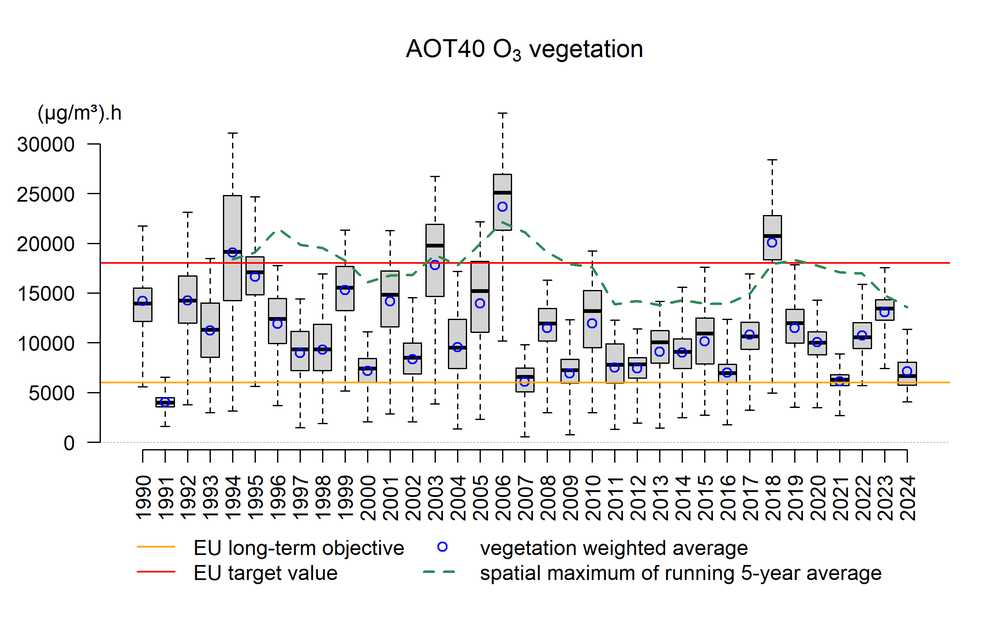AOT40 vegetation
O3 annual mean | NET60 | AOT60 | AOT40Veg
All data below are the result of the RIO interpolation technique, in which the measurement observations are interpolated to a 4x4 km² grid resolution. Locally, concentrations can be higher or lower.
The European Union has defined an excess indicator for the protection of vegetation. The AOT40 (= Accumulated Ozone exposure over a Threshold of 40 ppb (=80 µg/m³)) for vegetation is the accumulated excess of hourly ozone concentrations above 80 μg/m³ between 8:00 and 20:00 CET (Central European Time) in the months of May, June, July (=growth season). This indicator is designed for the protection of crops and (semi)natural vegetation. The AOT40 quantifies only ozone exposure, i.e. not the effective ozone uptake by (and therefore damage caused to) vegetation. The European target value is 18,000 (μg/m³).h averaged over 5 years. The long-term objective is 6000 (μg/m³).h.
Evolution of percentiles
The figure below uses box plots to show the evolution of the minimum, the 25th percentile (P25), the 50th percentile (P50), the 75th percentile (P75) and the maximum of the ozone excess for vegetation (AOT40 for vegetation) in Belgium since 1990. The years 1994, 2006 and 2018 were clearly unfavourable ozone years for vegetation. The maximum ozone excess for vegetation in Belgium, averaged over 5 years, exceeded the European target value of 18,000 (µg/m³).h in 2006, 2018 and 2019. The long-term target of 6000 (µg/m³).h is exceeded every year in most of Belgium.

Box plots of the ozone excess for vegetation (AOT40 for vegetation) in Belgium (1990–2024). The vegetation-weighted averages for Belgium are indicated by the blue circles. The green dotted line indicates the spatial maximum of the 5-year averaged AOT40. All data were calculated using the RIO interpolation technique.
Click here for more information on how to interpret a boxplot.
Spatial trend
Just as for the other ozone indicators, the largest AOT40 for vegetation is to be found in the southern and eastern part of the country. In West Flanders, ozone excess for vegetation is lowest. The European target value of 18,000 (μg/m³).h averaged over 2020–2024 was met everywhere in Belgium.

Spatial distribution of the ozone excess for vegetation (AOT40 for vegetation), 5-year average 2020–2024. 'No data' means that the data do not meet the criteria set out in 2008/50/EC Annex VII for aggregating the measurement data. All data were calculated using the RIO interpolation technique.
